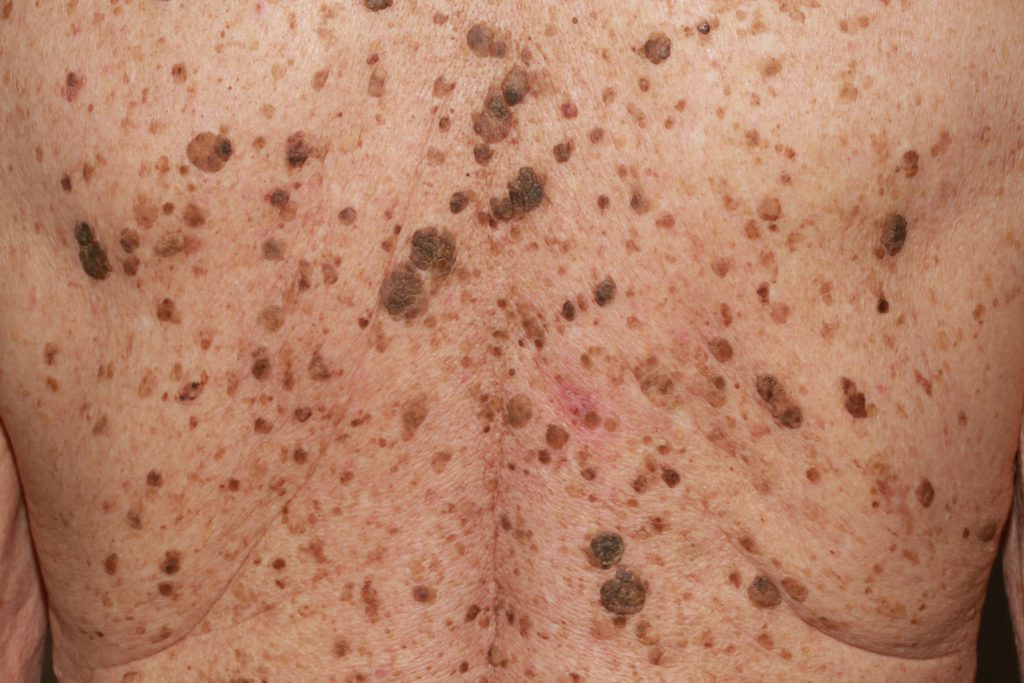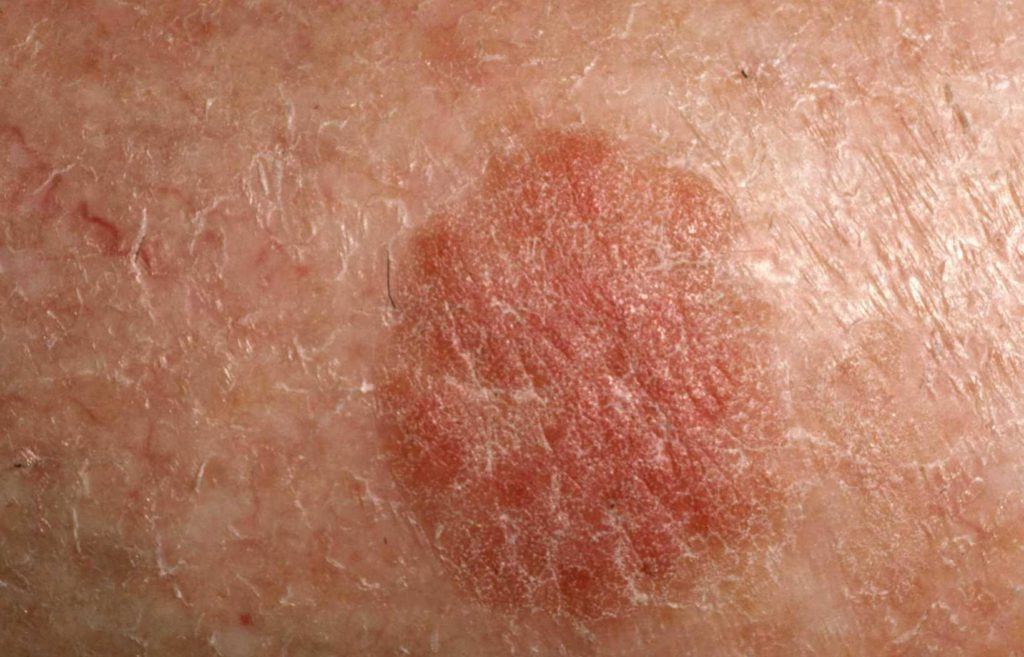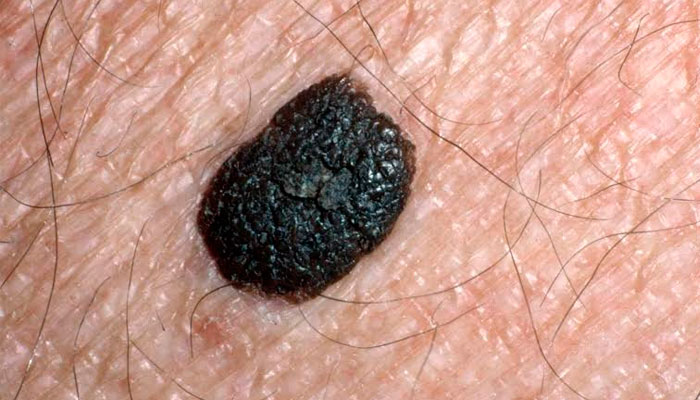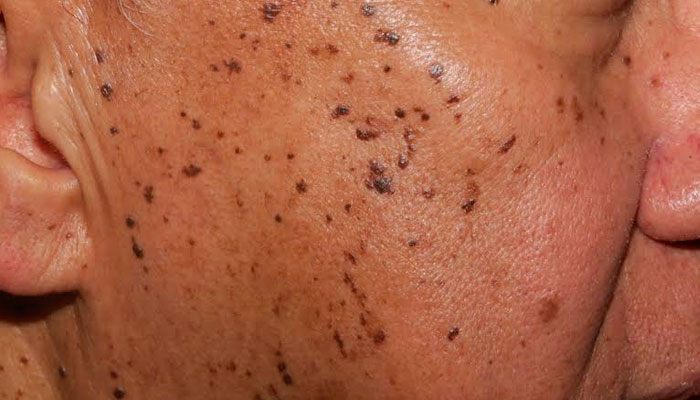If you have a skin growth that looks like a wart, you may have developed seborrheic keratosis. It’s a worrisome name, but take a deep breath — these lesions, sometimes called “the barnacles of aging,” are not dangerous. In fact, they are one of the most common skin conditions you can get as you age. Researchers estimate that more than 90% of adults over age 60 develop one or more of them, and some people have hundreds. They grow in men and women of all races and all ages. So, what do you need to know about them? We’ll explain it all.

What is seborrheic keratosis?
Basically, a seborrheic keratosis is a wart-like spot that grows on your skin as a sign of aging. It can also be called basal cell papilloma, senile wart, verruca senilis/seborrhoica, or brown wart.
They can appear in many different ways, and range in color from pink or skin colored to white and yellow to brown, gray, and black. They may even have multiple colors! A seborrheic keratosis can be flat or raised, and the lesions (papules) almost look like they’ve been pasted or stuck onto the skin. They can be tiny — just one millimeter — or several centimeters in diameter. Their surfaces can be smooth, waxy, or warty.
Seborrheic keratoses can be found alone or grouped together, and while you’ll usually find them on your face, chest, shoulders, or back, they can appear anywhere except the palms of your hands and the soles of your feet. They do tend to increase with age.

What we know about seborrheic keratosis
Although we know seborrheic keratoses are superficial and benign tumors, researchers are actually missing a lot of information about the epidemiology of the condition.
Most SKs are the result of a single aberrant (aka abnormal) cell that has reproduced and developed into a large mass. The varied appearances of the growths are the result of several histological subtypes. This means that the lesions differ in structure and cell makeup, although the subtypes can overlap.
The word “seborrheic” implies that the condition is connected to the sebaceous glands, but this is actually not the case here. The misnomer comes from the oily, shiny appearance of the surface in some types of growths.
Doctors and scientists don’t know the exact reasons that seborrheic keratoses form. But they do know that keratoses can follow sunburn and exposure to the sun’s ultraviolet rays, or related inflammation. They also know the disorder can be inherited, so if you have family members with this dermatosis, you may develop it.
A certain category of medications used to treat a range of cancers, called epidermal growth factor receptor inhibitors, can result in warty seborrheic keratoses.

I think I have one. What do I do?
Seborrheic keratoses don’t generally hurt, although they may itch. They may not require treatment unless you scratch or pick at them, resulting in bleeding and swelling. In some cases, this may lead to infection. You can have them removed if they bother you for cosmetic reasons, or if they get irritated by clothing.
In some rare cases, tumors around the eyes can cause issues with vision, and this situation will definitely require medical intervention.
The main issue with seborrheic keratoses is that they look scary, and some people mistake them as cancerous. While they can sometimes mimic cancer, seborrheic keratoses only rarely arise in conjunction with cancer. That said, they do need to be checked out. Any time you see changes in the growths, especially over a short period of time, or if they get irritated and start bleeding, you should visit a dermatologist.
 Image courtesy of summerlindermatology.com.
Image courtesy of summerlindermatology.com.
What to expect from seborrheic keratosis removal
Unfortunately, there is no known way of preventing seborrheic keratoses, but they can be removed. If you decide to have your seborrheic keratoses removed, remember that these growths tend to persist, and you may get more of them in the future. Since they’re related to aging, it’s unlikely you’ll stay SK-free your whole life.
Several methods are used to remove seborrheic keratoses. Your doctor can apply a local anesthetic, then take a biopsy of your skin. Thinner SKs can be frozen using liquid nitrogen in a process called cryosurgery. Or, electricity may be used to generate heat, which can then destroy tissue through cauterization. A dermatologist can also use ablative laser resurfacing techniques, or apply certain types of chemical peels to remove damage and rejuvenate skin.
These techniques are minimally invasive, and while they generally won’t involve significant downtime, there is a risk of scarring, dyspigmentation, and recurrence. It’s important that you talk to your doctor to determine which of these methods will work with your individual lesions.
Dr. Ashley Steffens, a dermatology resident at Southern Illinois University School of Medicine (SIU), helped contribute to the accuracy of this story.





I have had those on my face removed by electrolysis. It works!
Does Medicare and other health insurance cover the procedures to remove SK on you?
I have been diagnosed with granuloma annulare. Any suggestions how to get rid of it?